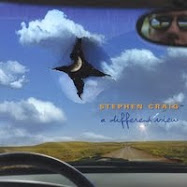This ancient caldera holds some of Tanzania’s greatest animal life within it‘s walls. It was one of the many gigantic volcanoes in the area in ancient times, but collapsed to form a self-contained eco system supporting an abundance of wild animals. Although these animals can move freely in and out of the crater, they don’t. They have all they need there….plenty of food, and water. This was another highlight of our Tanzania stay and here are some of our favorite pictures from our two descents into the crater.
This is the lodge where we stayed on the rim of the crater.
A very full…..or pregnant spotted hyena.
Many lions…..close enough to touch…..but, we didn’t! 
Who would have guessed that ostriches live here?
We saw lots of newborns……within hours of their birth already walking. Were you aware that vultures love placentas?

Black rhino….our very first look at this prehistoric looking beast.
Masai warriors have permission to graze their cattle in Ngorongoro, but must leave every night for their homes just outside the crater. They walk amongst cape buffalo, rhino, lion, elephant, hippo with only a large stick as protection.
Eland are part of the bovine family and are very shy and difficult to see. We were out very early one morning and had a few minutes with this beauty.
This guy had the largest tusks of any of the elephants we saw while in Africa. They went all the way to the ground. Unfortunately, this is very rare as the elephants with the DNA that produce mammoth tusks have been hunted to near extinction. Why do people want so much ivory? Even today.



Better get up little one………hungry lions are close by. 

Even a baby Cape Buffalo is cute. 



























 Remember the phrase and the song Hakuna Matata from the same movie? Hakuna Matata is Swahili for No Problem. When we first caught glimpse of the lions lounging on the rocks, it was easy to think that they live the life of hakuna matata. Up close and in personal these wild kings and queens of the jungle exude strength and power. To say that we were in awe only begins to describe our experiences with these super sized kitties.
Remember the phrase and the song Hakuna Matata from the same movie? Hakuna Matata is Swahili for No Problem. When we first caught glimpse of the lions lounging on the rocks, it was easy to think that they live the life of hakuna matata. Up close and in personal these wild kings and queens of the jungle exude strength and power. To say that we were in awe only begins to describe our experiences with these super sized kitties. 






 Cub survival rate is low due to availability of food and competition amongst males. After battling it out for superiority in a pride, a male lion will kill any cubs in the pride that aren’t his. Until recently, the Maasi tribe of Tanzania practiced killing a lion as a rite of passage to manhood. Hakuna matata for the life of a lion? Hardly.
Cub survival rate is low due to availability of food and competition amongst males. After battling it out for superiority in a pride, a male lion will kill any cubs in the pride that aren’t his. Until recently, the Maasi tribe of Tanzania practiced killing a lion as a rite of passage to manhood. Hakuna matata for the life of a lion? Hardly. 














